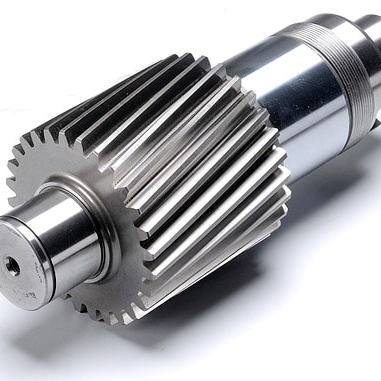The review of forging quality problems is a very complex and wide-ranging work. It can be reviewed according to the cause of the defect, the responsibility of the defect, and the location of the defect. Therefore, it is necessary to Categorize it.

(1) According to the process or production process that produces defects, there are quality defects generated in the material preparation process, quality defects generated in the forging process, and quality defects generated in the heat treatment process.
1) Defects caused by raw materials. ① Defects of forgings caused by raw materials: cracks, cracks, shrinkage holes, looseness, impurities, segregation, scarring, bubbles, slag inclusions, blisters, folding, scratches, non-metallic inclusions, white spots, and other defects; ② Defects caused by raw materials Longitudinal or transverse cracks, interlayers and other defects caused by defects during forging; ③There is a problem with the chemical composition of raw materials.
2) Defects caused by blanking include rough and uneven end face, inclined end face and insufficient length, end crack, end burr, and interlayer, etc.
3) Defects caused by heating include: cracking, oxidation and decarburization, overheating, overburning and uneven heating.
4) Defects in forging include: cracks, folds, concave ends, insufficient size and shape inconsistencies, and surface defects.
5) Defects in cooling and heat treatment after forging include: cracks and white spots, deformation, inconsistent hardness or coarse grains, etc.
(2) Classification according to the responsibility for producing defects
1) Quality related to forging process and tooling design – design quality (rationality of forging design). Before being put into formal production, engineers and technicians should convert product drawings into forging drawings, formulate process plans, design tooling dies, and debug production. All production technologies are ready before they can be transferred to formal production. Among them, the design quality of process and tooling, and the debugging quality of tooling directly affect the quality of forgings.
2) Quality related to forging management – management quality. Forging quality defects caused by poor equipment conditions and process connection problems. Every link in the forging production process has factors that may affect the quality of the forgings. Therefore, it is necessary to control each production link from the selection of raw materials to the post-forging heat treatment to ensure the consistency of product quality and products.
3) Quality related to the forging manufacturing process – manufacturing quality. Defects in the quality of forgings caused by the operation not meeting the specifications or the operator’s lack of responsibility.
4) Quality related to the inspection process of forgings – inspection quality. Inspectors should conduct strict and meticulous inspections to prevent missed inspections.
(3) According to the location of the defect, there are external defects, internal defects, and surface defects.
1) Dimensional and weight deviation: ①Cutting allowance, on the premise that the forging can be processed into qualified parts, the smaller cutting allowance should be kept as much as possible; ②Dimensional, shape, and position accuracy refers to the external size and shape of the forging. Bit allowable deviation; ③ Weight deviation.
2) Intrinsic quality: the requirements for the metallographic structure, strength, or hardness of the forgings after heat treatment (note: some forgings are not heat-treated, but also have intrinsic quality requirements), as well as other potential quality defects. Provisions.
3) Surface quality: refers to the surface defects, surface cleaning quality, and anti-rust treatment of forgings.

